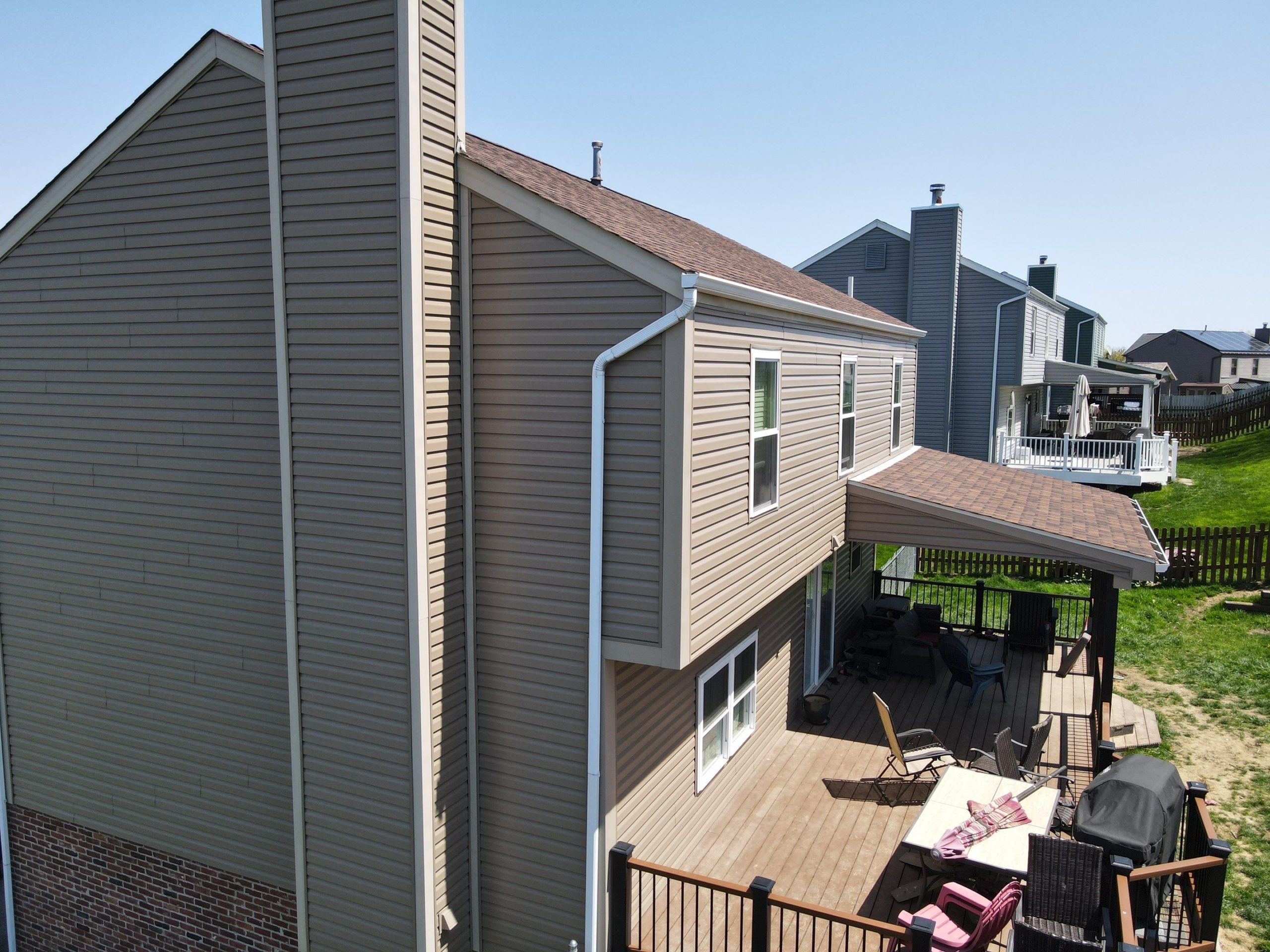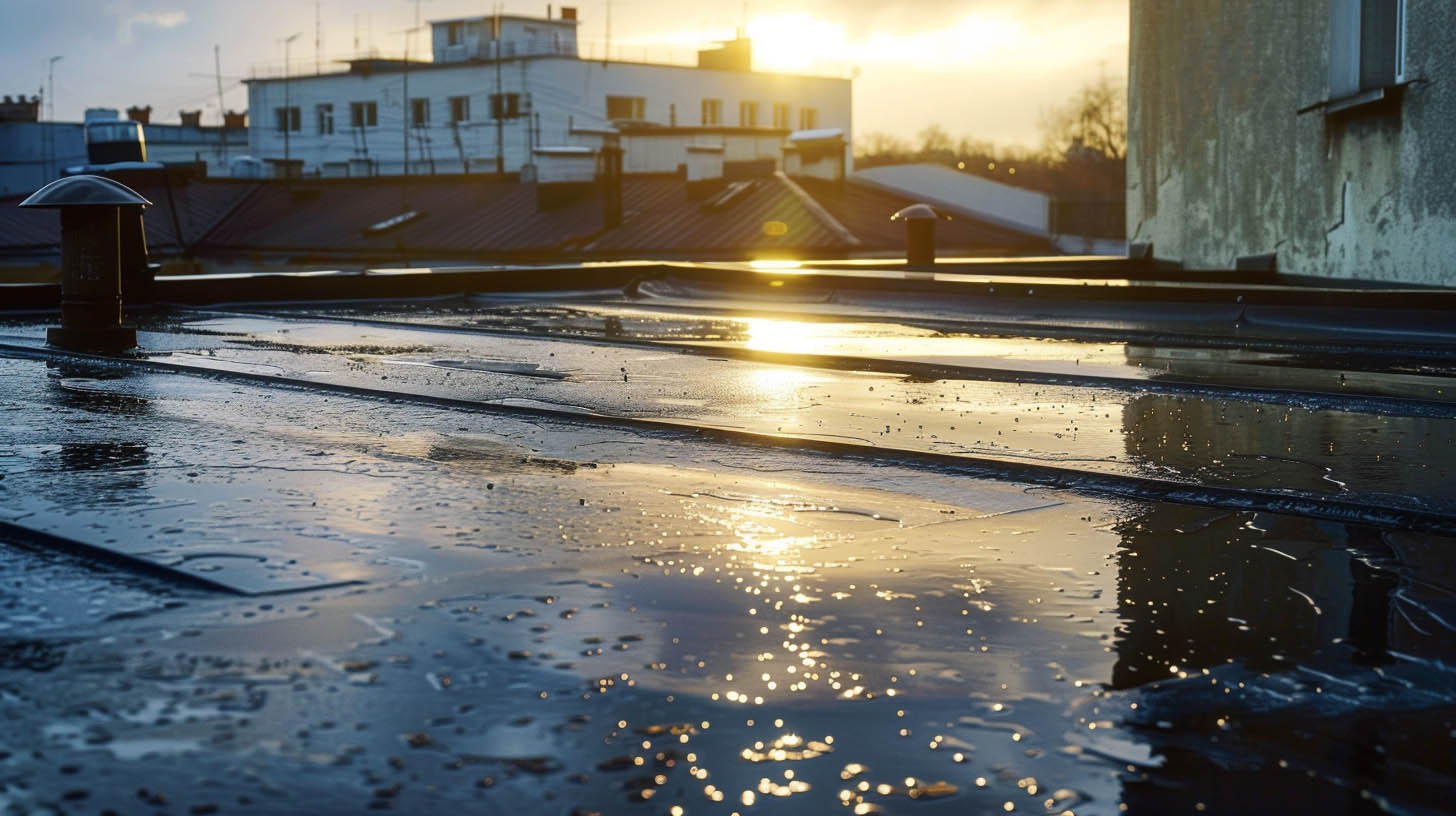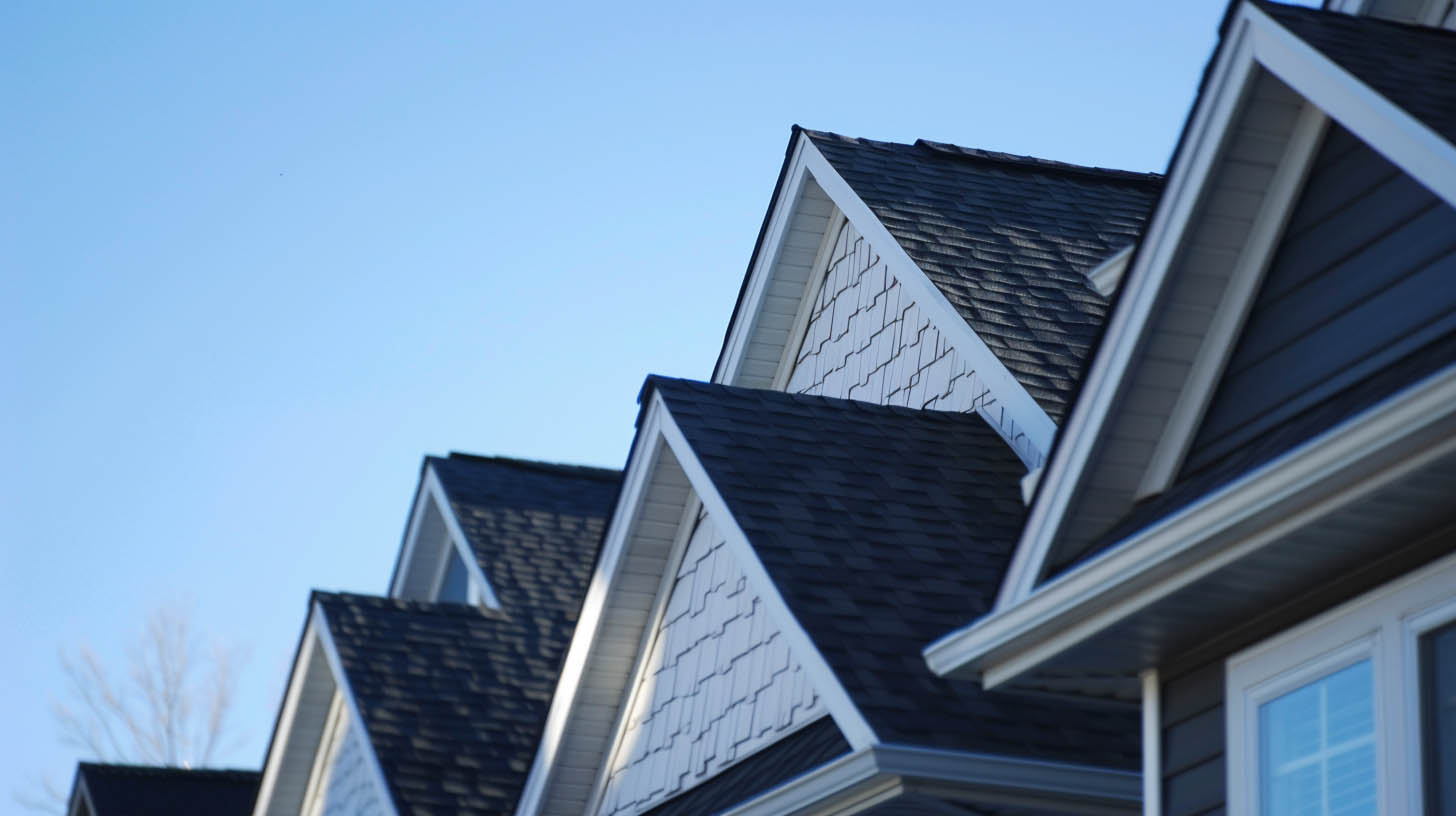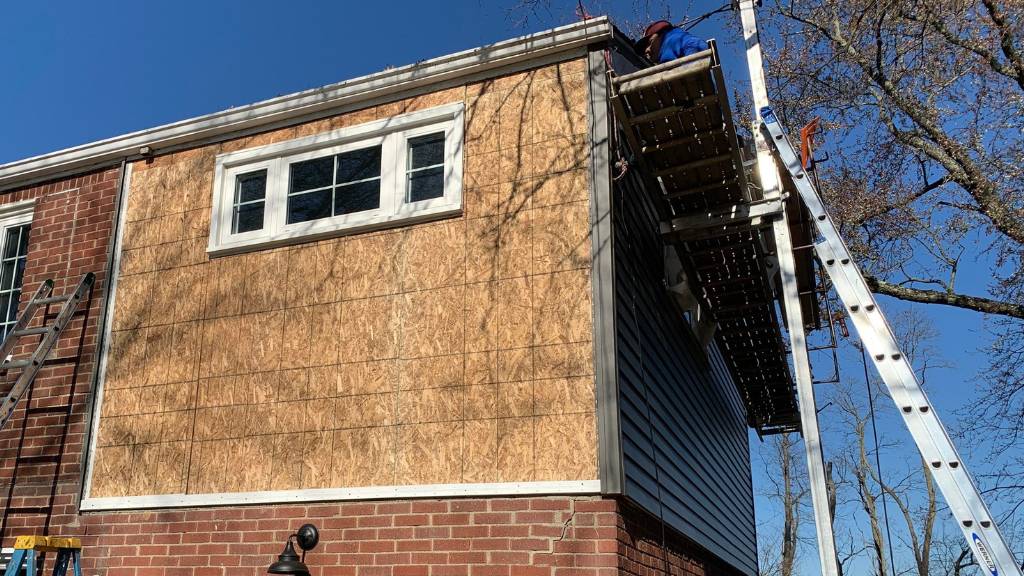
With fall approaching fast, and as the days grow shorter and temperatures drop, it’s time to start thinking about how to prepare your home’s exterior siding for the colder months. While many homeowners focus on winterizing their interiors, it’s equally important to give some attention to your home’s exterior, especially the siding. Proper maintenance and preparation can help protect your siding from the harsh winter elements, ensuring that your home remains cozy and well-insulated throughout the season.
4 Tips:
Prepare Exterior
Siding for the
Colder Months
Learning How to Prepare Your Home’s Exterior Siding for the Colder Months Starts by conducting a comprehensive inspection of your siding. Look for any signs of damage, such as cracks, holes, or loose panels. Pay close attention to seams and joints, as these areas are particularly vulnerable to water infiltration and freezing. If you spot any issues, address them promptly before the cold weather sets in.
#1: Pre-Winter Maintenance
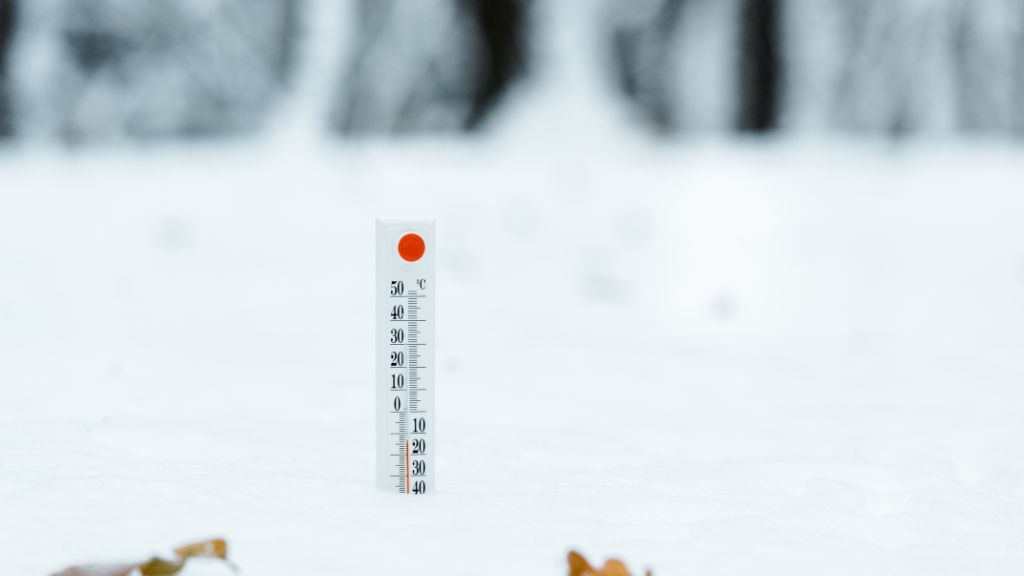
Over time, dirt, grime, and algae can accumulate on your siding, diminishing its appearance and potentially causing damage. Use a pressure washer or a soft-bristle brush to clean your siding thoroughly. You can also use a mild detergent or a specialized siding cleaner to remove stubborn stains. Cleaning not only improves the aesthetics but also prevents the growth of mold and mildew, which can thrive in damp conditions.
The following types of siding are the most popular, but most siding can be easily cleaned by using a mild detergent, soft bristle brush, and a garden hose (or pressure washer used on a low-pressure setting). Let’s take a look:
Vinyl Siding
Vinyl siding requires a minimal amount of maintenance, making it an excellent choice for homeowners who want an attractive and durable exterior cladding that doesn’t demand constant attention or upkeep.
Should your vinyl siding display a chalky appearance, it may be a signal for cleaning or replacement. Vinyl siding typically benefits from a biannual power washing regimen. If power washing fails to eliminate the chalky texture, it could imply that the siding’s finish has deteriorated, prompting consideration of a replacement.
Wood Siding
Wood siding’s aesthetic appeal makes it a favored option among homeowners. Yet, it’s crucial to acknowledge that wood siding is prone to rotting, demanding a fair share of maintenance. To assist you in preserving your wood siding during the winter months, make sure that water damage does not damage your siding. To protect it, use a clear sealer every couple of years. If it’s a painted wood siding, you would want to reapply every 5 or 6 years.
Fiber Cement Siding
Fiber cement siding is made of cement and sand. It’s one of the lowest maintenance sidings you could ask for. It’s super durable, too! Regardless of the low maintenance materials used on this siding, it still does require some maintenance.
Here are some valuable tips:
- Do not paint fiber cement siding during winter (temperatures 50 degrees or below).
- Check the caulking to make sure it does not need to be repaired. Otherwise, it will not retain heat during the winter months.
#2: Repair or Replace Damaged Siding
If you discovered any damage during your inspection, it’s crucial to address it promptly. Repair small cracks and holes with a high-quality exterior caulk that’s designed for your siding material. For more extensive damage or if your siding is beyond repair, consider replacing the affected panels to maintain the integrity of your home’s exterior.
Steps to Consider for Damaged Siding:
- Small Cracks and Holes: If you notice small cracks or holes in your siding, it’s crucial to address them promptly. These openings can allow moisture, cold air, and pests to infiltrate your home, leading to more significant problems over time.
- Extensive Damage: In cases of more extensive damage, such as large sections of rotting or severely damaged siding, repair might not be a viable option. It’s advisable to consult a professional siding contractor to assess the extent of the damage and recommend the most appropriate solution. They may recommend replacing the affected panels or sections of siding to ensure the structural integrity of your home.
Professional Repair or Replacement: Hiring a professional for siding repair or replacement is highly recommended.
